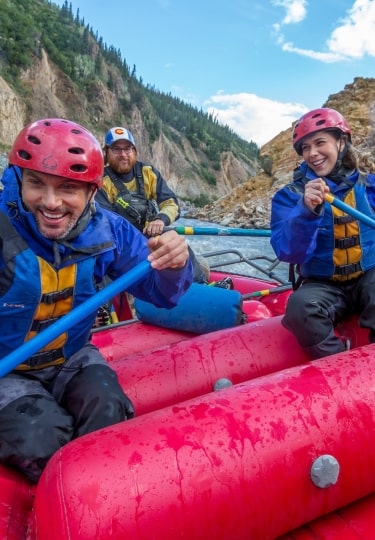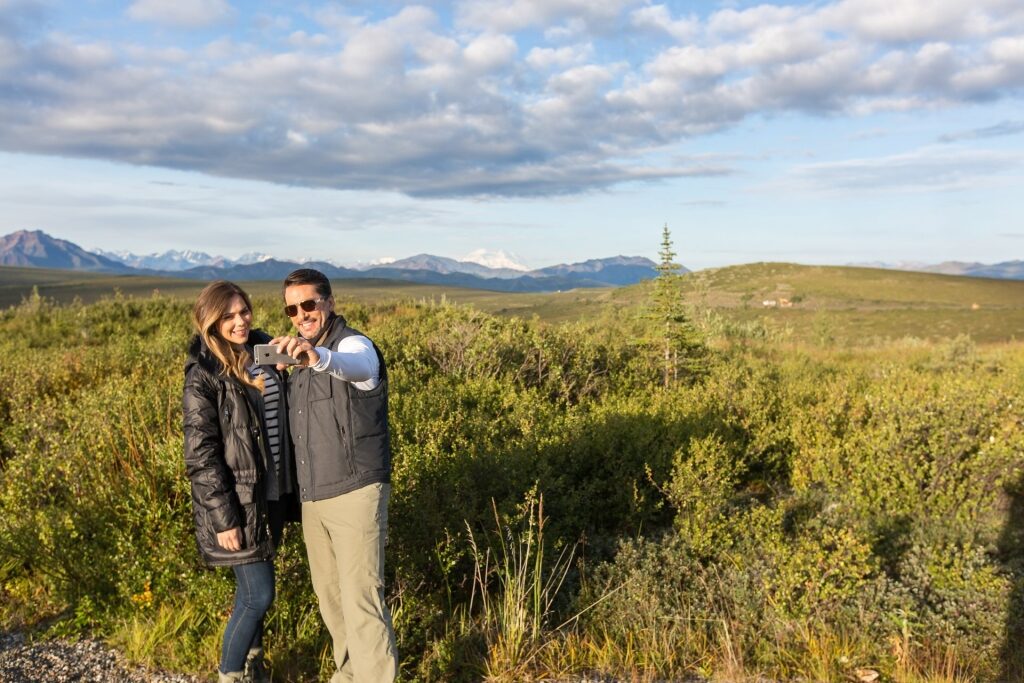The vast, pristine wilderness of Alaska is protected and conserved by 24 separate national parks, monuments, and historical parks. Millions of acres of wilderness encompass snowy mountain ranges, tidewater glaciers, primeval forest, and 14,000 years of human history. In Alaska’s national parks, you’ll find an extraordinary range of wildlife, including brown and grizzly bears, moose, wolves, sea otters, and vast pods of whales.
While it’s tempting to consider Alaska one endless swathe of mountains, ice, shoreline, and forest, each national park has distinctive characteristics. Many encompass fascinating human stories as well as extraordinary natural beauty. Here are five of the best Alaska national parks to explore.
Sitka National Historic Park
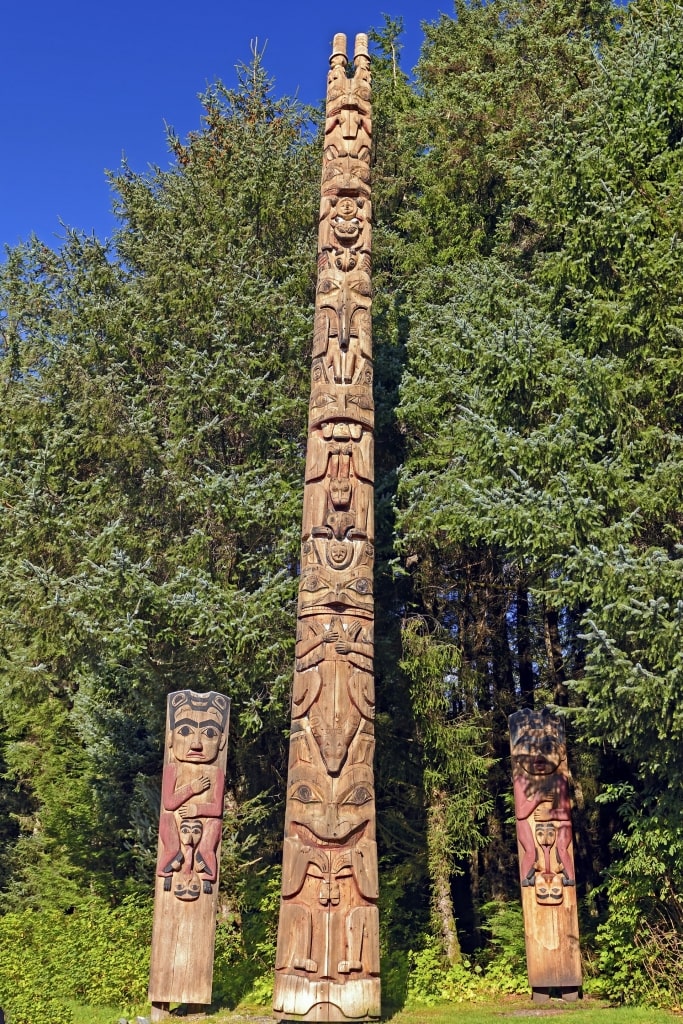
Sitka National Historic Park
Sitka National Historic Park is the smallest and oldest of Alaska’s national parks, established in 1910 to commemorate the site of a battle in 1804 between Russian invaders and the indigenous Tlingit people. The Tlingit had a wooden fort here at the time, the outline of which still remains, at the mouth of the Indian River.
While the battle lasted a week and ended in the defeat of the Tlingit, the spot today is peaceful and serene—the only sound is the wind whispering in the trees. You can learn about the battle and see Russian and indigenous artifacts in the visitor center, where there are also artisan woodcarvers at work.
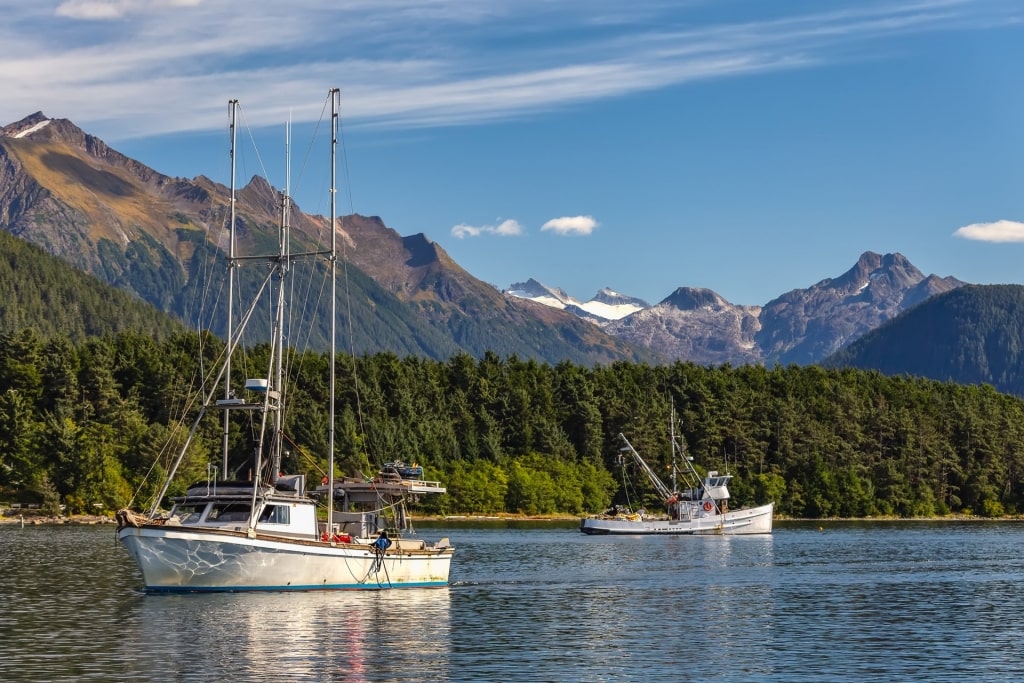
Sitka National Historic Park
The park occupies a relatively small area of just 113 acres on a forested peninsula to the southeast of Sitka on Baranof Island. Yet it packs a punch in its natural beauty, where towering spruce and hemlock stand guard over the tranquil, island-studded waters of Sitka Sound.
One of the best things to do in Sitka is to walk the mile-long woodland Totem Trail through glens of ferns, shrubs, and woodland flowers to admire 18 colorful and elaborate totem poles built by the Tlingit and Haida people. The originals of these were collected between 1903 and 1905 by District Governor John G. Brady from all over Alaska, although most are kept in protective storage now. What you’ll see are carefully crafted replicas.
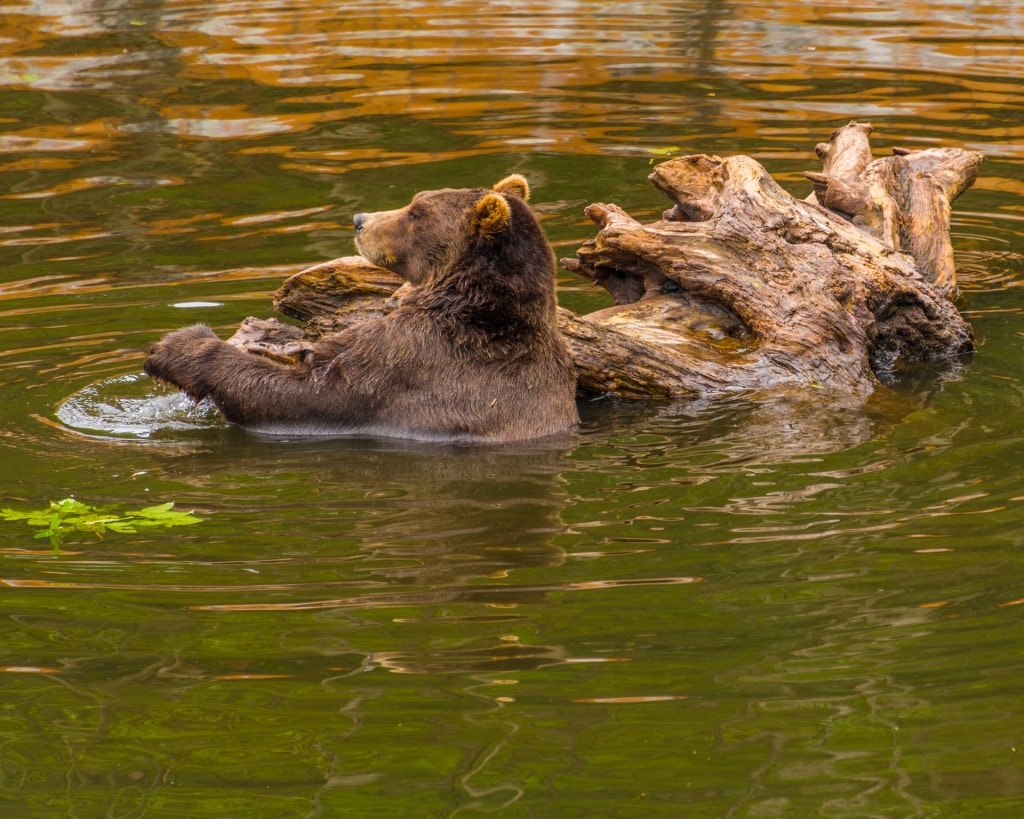
Brown bear
Come to this Alaska national park in spawning season, and the river will be heaving with silvery salmon forcing their way upstream. Hungry bears come down to the water to feast at this time, so be sure to follow the marked trails—and if a trail is closed, it’s for good reason.
Half a mile from the park, you can visit the Russian Bishop’s House, built from spruce in 1841 by the Tlingit. It’s one of just a handful of examples of 19th-century Russian colonial architecture remaining in the Western Hemisphere. Today, the house is a National Historic Landmark. Inside, an exhibition includes precious icons as well as an insight into life in Russian America.
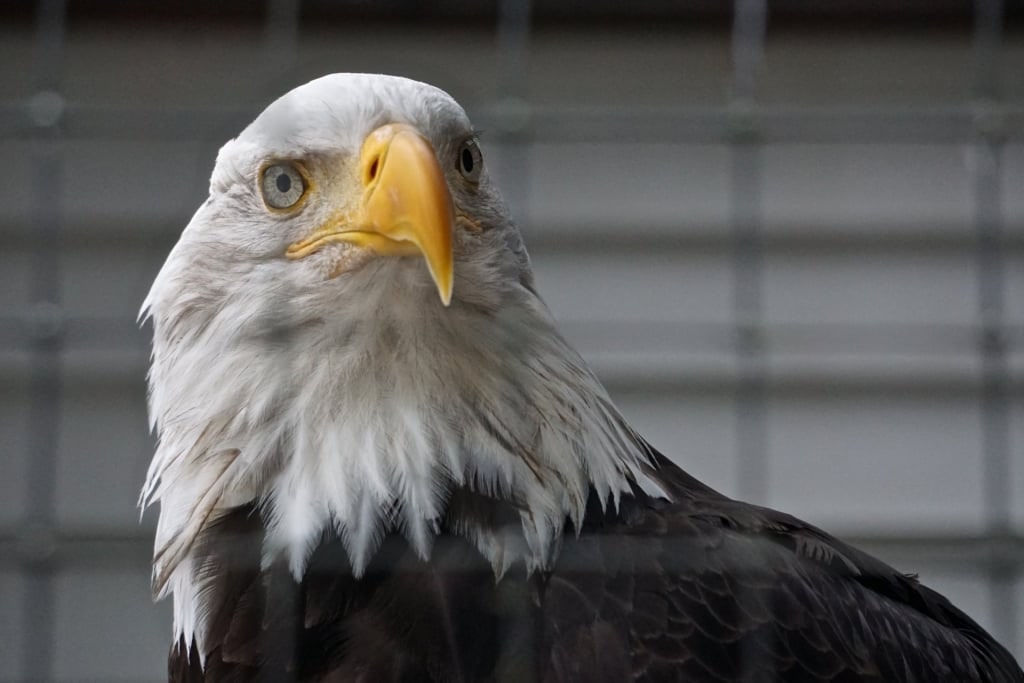
Alaska Raptor Center, Sitka
On the fringes of the park is the Alaska Raptor Center, a wonderfully worthwhile visit and a great attraction if you are traveling to Alaska with children. The center provides medical treatment and rehabilitation to more than 200 injured birds every year, many of them bald eagles, falcons, and owls. A highlight is the Flight Training Center, where you can observe the birds learning to fly again after an injury before being released into the wild.
Glacier Bay National Park
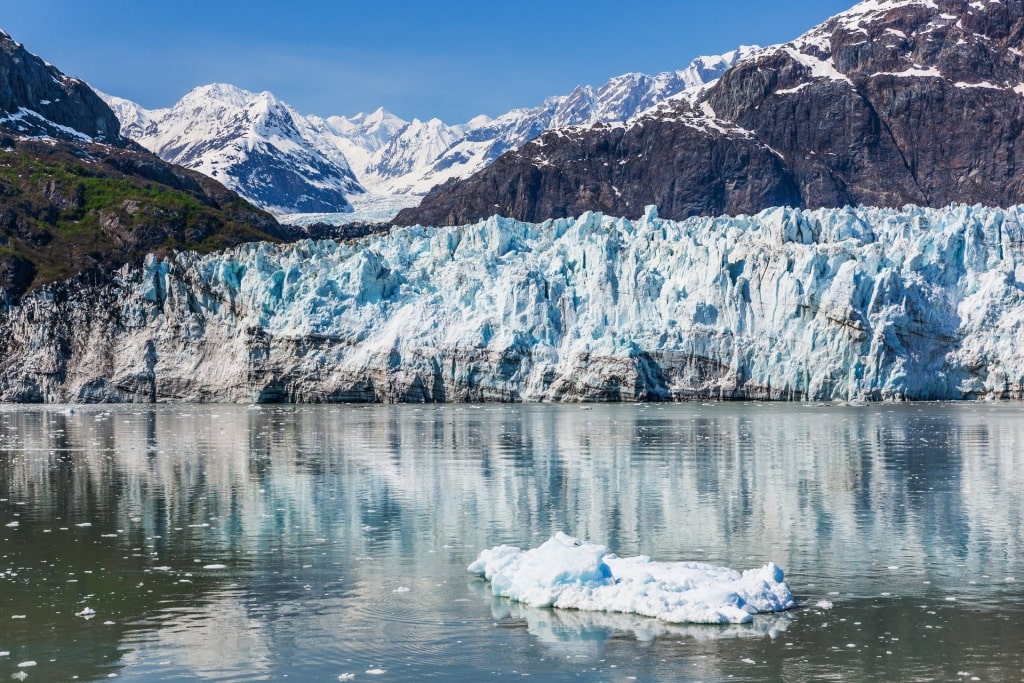
Margerie Glacier, Glacier Bay National Park
The vast Glacier Bay National Park spans 3.3 million acres of craggy mountain, creaking Alaskan glaciers, emerald rainforest, and glassy fjords. A visit here is the highlight of any trip to Alaska, whether you view the jaw-dropping scenery from the water, a hiking trail, or the air.
More than just a national park, Glacier Bay is a UNESCO World Heritage Site and an internationally protected World Biosphere Reserve, such is its significance. It’s the largest study in the world of large-scale glacial retreat, with multiple scientific projects in progress observing the tidewater glaciers and rare ecosystems. The park, the center of which is an ice-strewn, 65-mile-long fjord, is also of great spiritual significance to the Tlingit, who have lived here for generations.
Currently, there are an estimated 1,045 glaciers in the park, covering 27 percent of the land surface. Some 50 of these are named, and seven of them are the towering, blue-white walls of ice that calve regularly into the bay, with a rumbling, splitting, cracking sound. Seeing this from the water is mesmerizing and the scale is incredible; the Margerie Glacier, for example, towers 250 feet tall and a mile wide.
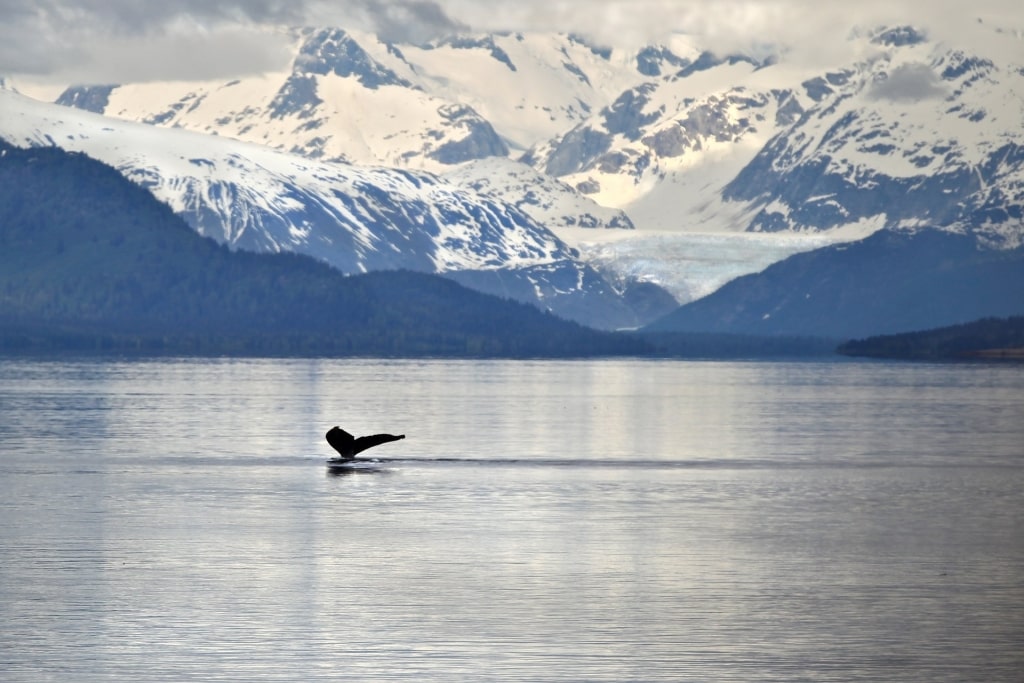
Humpback whale, Glacier Bay National Park
The park offers plenty of opportunities to see some of the most popular animals in Alaska. You may spot sea otters floating on their backs, feeding, grooming, or even sleeping. Humpback whales and porpoises come to the nutrient-rich waters to feed, while you could also see brown and black bears, wolves, mountain goats, and moose on the shore.
One fascinating way to admire the dazzling beauty of Glacier Bay is from the air. Looking down on this icy wilderness, you’ll get perspective on the fact that just 250 years ago, the whole fjord was occupied by one massive glacier, which has since retreated more than 60 miles.
You’ll soar over icefields, past tumbling Alaskan waterfalls, over the dense canopy of spruce and hemlock, and see your aircraft’s reflection in uncannily blue meltwater pools, shimmering in the sunlight. The privilege of seeing the raw beauty of nature aside, the whole experience is a living geography lesson, as you spot the tongues of the glaciers, the snowy mountaintop cirques where they form, and the moraines they leave behind.
Read: Hubbard Glacier vs. Glacier Bay vs. Endicott Arm & Dawes Glacier
Denali National Park

Moose in Denali National Park
Denali National Park is just breathtaking and, to many, the jewel in the crown of Alaska’s national parks. Six million acres of rolling tundra, sub-Arctic taiga forest, birch and aspen, braided rivers, and a backdrop of jagged, snow-covered mountains await, the majestic mountain dominating the horizon.
This is the place to spot Alaska’s Big Five—bear, moose, caribou, wolf, and Dall sheep—as well as to breathe lungfuls of mountain air, hike, raft, fish, and relax.
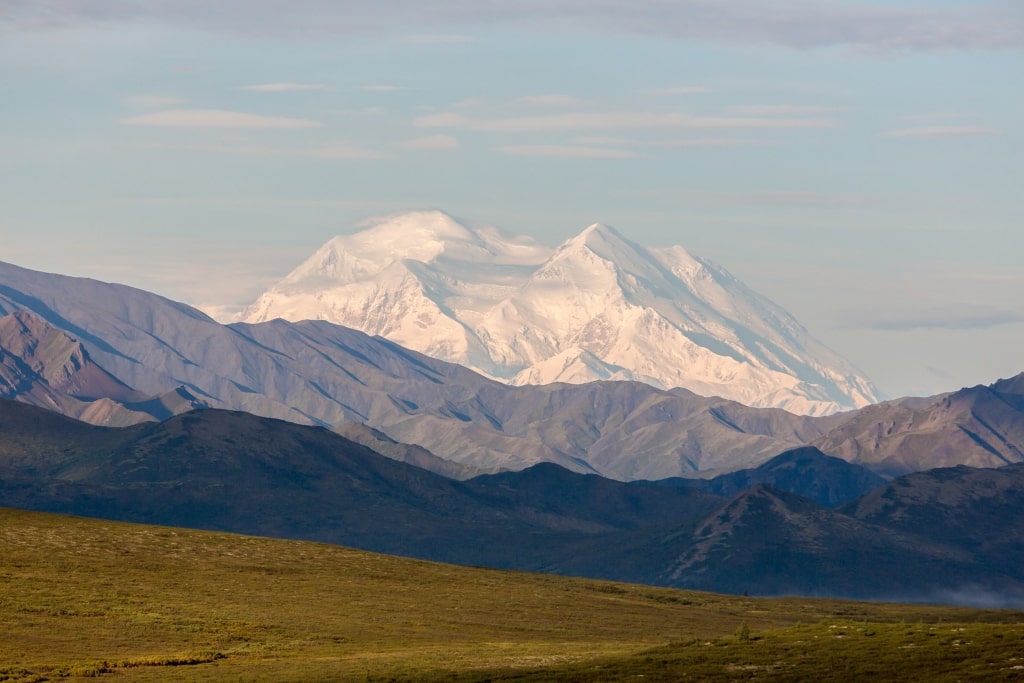
Denali
Here, you’ll see North America’s highest peak and the most majestic of all Alaska’s mountains. What makes it all the more striking is the fact that the base of the mountain is relatively low, at around 2,000 feet above sea level, so the view from the ground is an astonishing 18,000-foot wall of granite and ice—when it deigns to appear from its misty shroud, that is.
Only one road bisects the park, which spans 92 miles, and is made of dirt and gravel, passing over tundra and ascending through mountain passes.
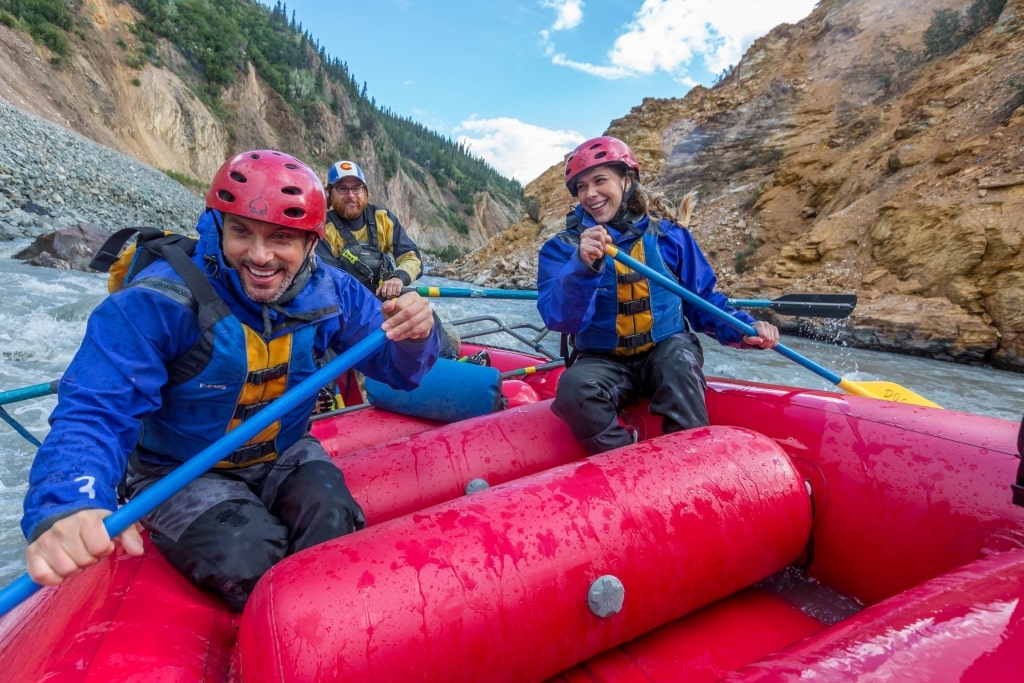
Denali National Park
One of the most beautiful places in Alaska, Denali National Park is one vast, natural playground for lovers of the outdoors. Soar above sun-dappled landscapes and along mountain valleys in a helicopter, or ride the rapids of Nenana River in an inflatable vessel, feeling the adrenaline rush as you plummet over foaming white water, navigating rocks and shallows.
If that’s a thrill too far, there are quieter sections of the river on which you can just sit back and enjoy the scenery as your raft floats gently with the current. For the ultimate view, take a flightseeing tour by light aircraft right over the snow-capped summit of the mountain.
There are numerous hiking trails, whether you’re in the company of a knowledgeable ranger, who can point out the plants and wildlife, or going solo, just absorbing the scenery and the silence. Other activities include visiting the park’s husky kennel, bouncing along on an ATV safari that takes you over rocky river beds, and fly-fishing.
Klondike Gold Rush National Historical Park
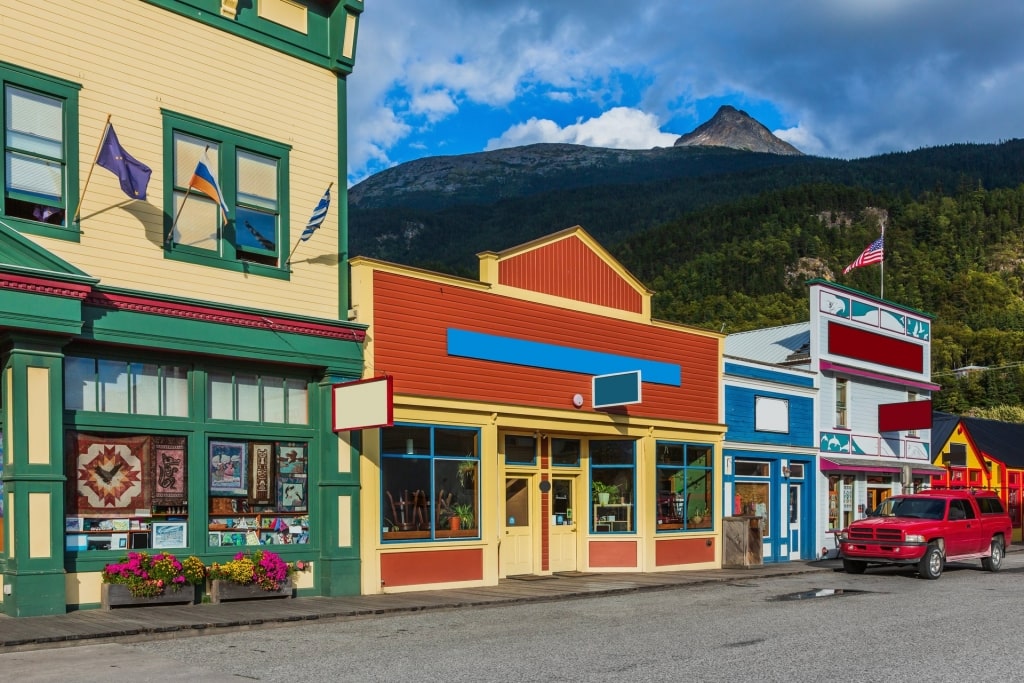
Skagway Historic District in Klondike Gold Rush National Historical Park, Skagway
While its outstanding and dramatic natural beauty is undisputed, the Klondike Gold Rush National Historical Park near Skagway essentially tells a human story. The 13,191 acres of steep, mountainous terrain, coastal forest, and urban space have been preserved to tell the tale of the great Klondike Gold Rush of 1897-1898—of the 40,000 stampeders, among them villains and heroes, victors and victims.
The park was designated in 1976 and actually comprises four units: downtown Skagway Historic District; the White Pass; the former boomtown of Dyea, nine miles to the west of Skagway and now a ghost town; and the Chilkoot Trail, 33 miles of tough hiking over the coastal mountains from Dyea to Lake Bennett in British Columbia.
Skagway is where most visitors begin their exploration, its streets lined with historic clapboard buildings, old-fashioned stores, and colorful saloons. Many have been restored and give an entertaining flavor of the debauchery and general lawlessness of the town at the height of the Gold Rush.
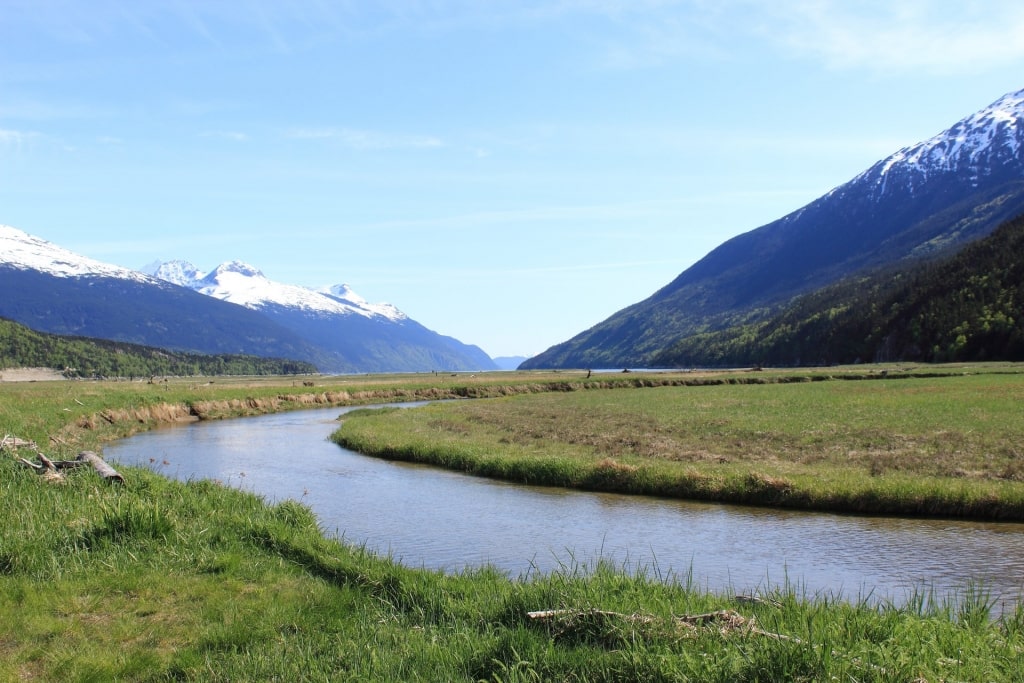
Dyea in Klondike Gold Rush National Historical Park, Skagway
Dyea was once a seasonal fishing post for native Alaskans who would travel inland from here over the Chilkoot Trail to trade. During the Gold Rush, practically overnight, this sleepy spot became a thriving base for prospectors who would land here and use it as a base from which to access the goldfields of the Yukon.
Today, forest and wildflower meadows have reclaimed the land, although a few remnants of wooden buildings and the old pilings of the wharf remain. Dyea is an archaeological site but also a place of great peace and serenity.
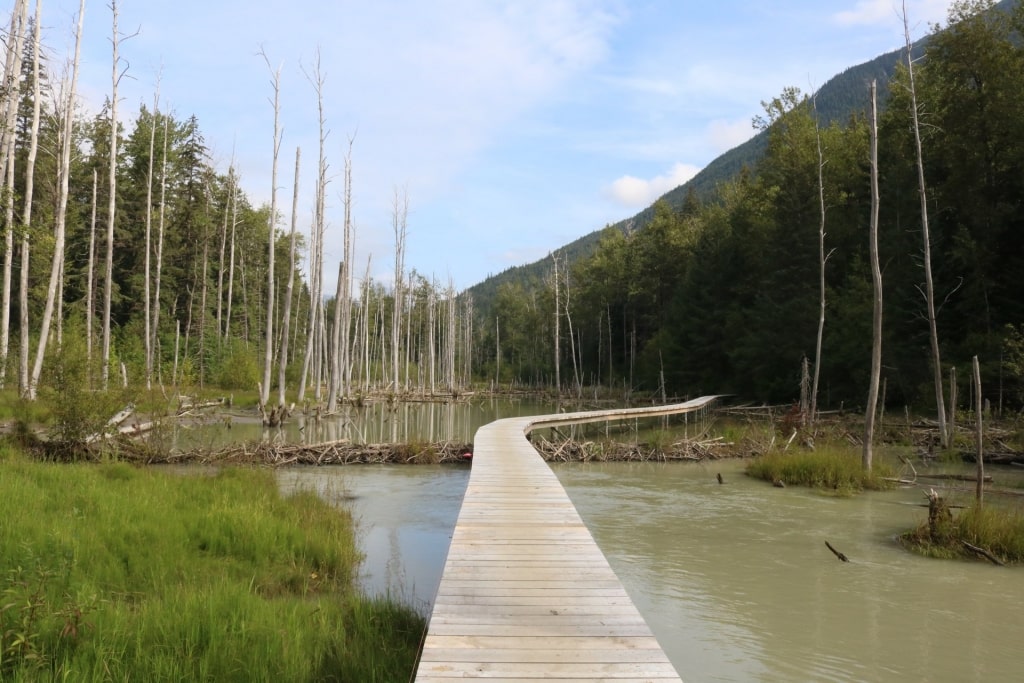
Chilkoot Trail in Klondike Gold Rush National Historical Park, Skagway
The Chilkoot Trail, once one of only two ways across the mountains, is enjoying a modern incarnation as one of the best places to hike in Alaska. This tough 33-mile trek leads to the headwaters of the Yukon River.
Travel during the Gold Rush, with strings of pack animals and unimaginably tough conditions, was slow, steep, and dangerous. Today, the trail offers only beauty, with magnificent views down over the forest, no sound except birdsong, and the wind in the trees. You can tackle as much or as little as you like for a taste of those heady days of the late 19th century.
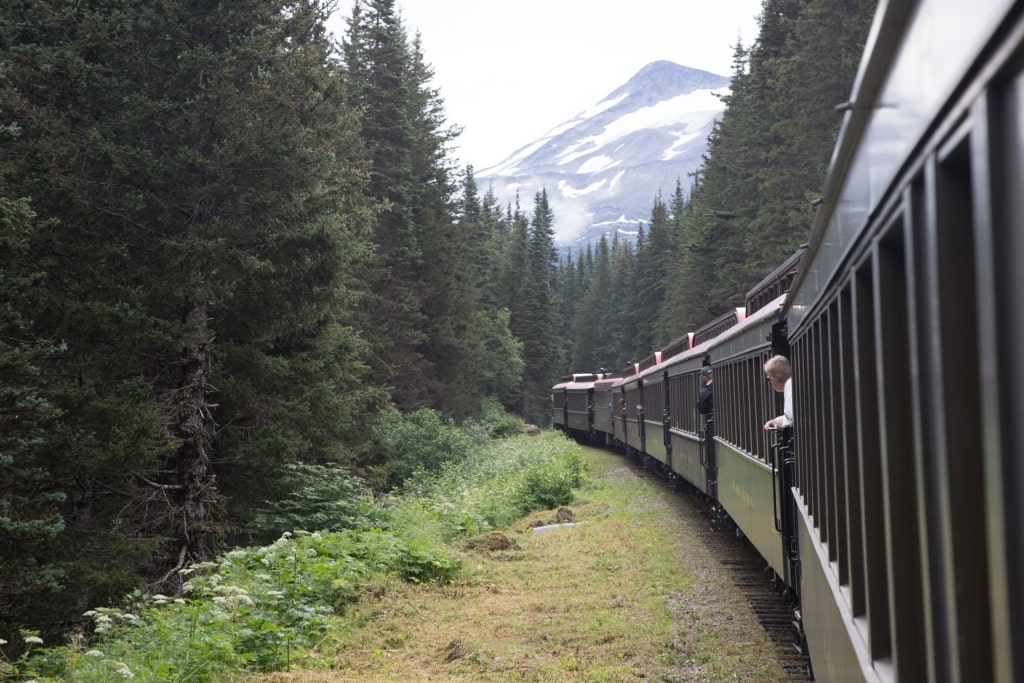
White Pass & Yukon Route Railway, Skagway
The White Pass was a less steep but equally treacherous route to Lake Bennett, muddy and swampy in summer and bitterly cold in winter. Sections of the pass are visible from the narrow-gauge White Pass & Yukon Route railroad, which was completed in 1900 and today serves as one of the most beautiful railroad journeys in Alaska. The train trundles along the contours of narrow, forested valleys, over spindly bridges and foaming rivers, ascending from sea level to 2,865 feet in just 20 miles.
Riding the train is just one of many activities you can do from Skagway; this is also a great spot for hiking, fishing, wildlife spotting, and rafting. There are also more extreme adventures to be had, like heli-hiking, ATV safaris, or kayaking on an alpine lake. You could join a team of mushers and learn about sled dogs, too, or ride on horseback through the Tongass Forest, keeping an eye out for bald eagles.
Kenai Fjords National Park
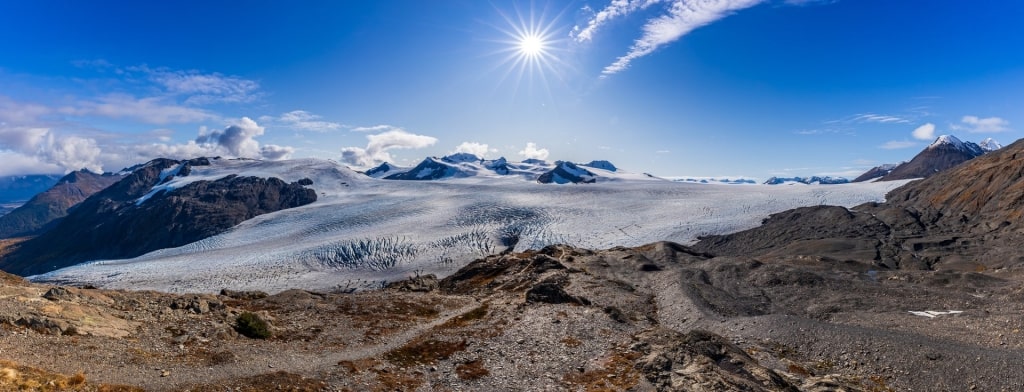
Kenai Fjords National Park
Ice meets the ocean at the spectacular Kenai Fjords National Park, one of the best national parks in the world, with 601,839 acres of absolutely pristine and impenetrable wilderness stretching southwest from Seward. This Alaska national park was created in 1980 to protect this extraordinary area, as well as the tidewater glaciers, fjords, forest, and rich wildlife that characterize the natural beauty here.
Some 60 percent of the park is snow and ice thanks to the 936-square-mile Harding Icefield, from which some 40 glaciers originate, creaking and groaning as their colossal weight and the force of gravity pulls them down to the ocean. Harding is one of only four remaining icefields in the U.S.
Read: Things to Do in Seward, Alaska
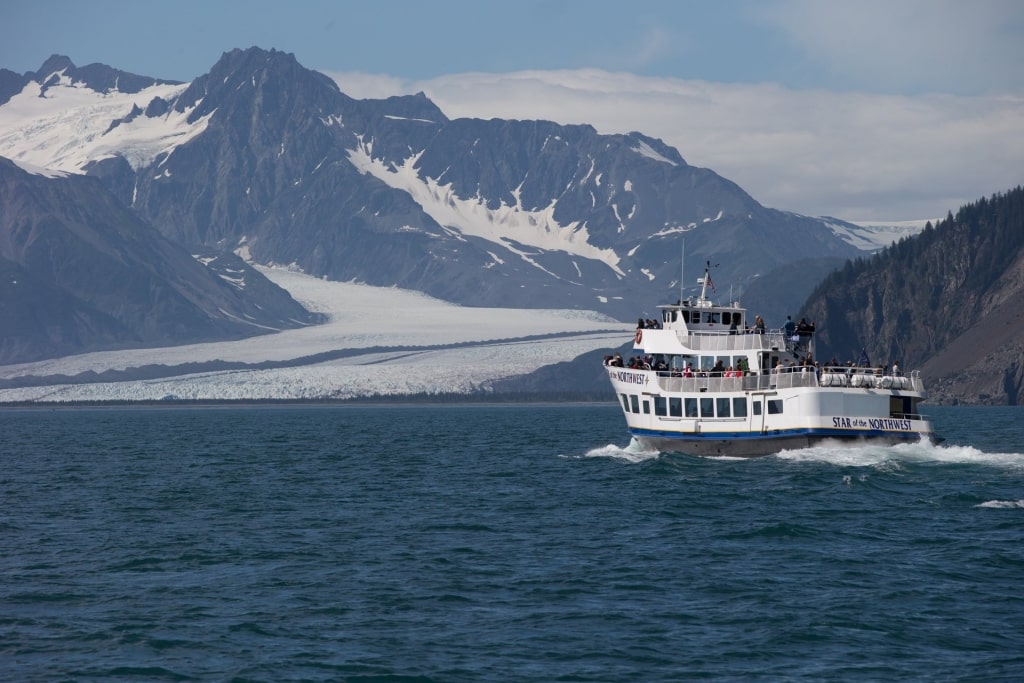
Resurrection Bay, Kenai Fjords National Park
Kenai is unusual in that much of the park can only be viewed from the water, with boat trips departing Seward on a daily basis. You’ll cruise Resurrection Bay to the glacier faces with a chance to spot incredible wildlife.
Whales are abundant here, and you’ll often be enchanted by acrobatic humpbacks breaching and tail slapping, or the sleek black-and-white figures of cruising pods of orca. Whole families of sea otters raft up, bobbing comically on their backs, while sea lion colonies bask on sun-warmed rocks.
Bears forage on rocky beaches, while you could even spot beavers, coyotes, and mountain goats. Birdlife includes puffins, bald eagles, and countless species of seabirds; a total of 191 species of bird has been documented here, so remember your binoculars.
Small boats take you deep into fjords, including Aialik Bay, Northwestern Lagoon, McCarty Fjord, and North Arm. You’ll get as close as is safe to towering walls of ice of the tidewater glaciers, where, with luck, you’ll experience the drama of chunks of ice calving off into the milky blue water. You can also kayak along the pristine shorelines, where you’ll be completely immersed in nature.
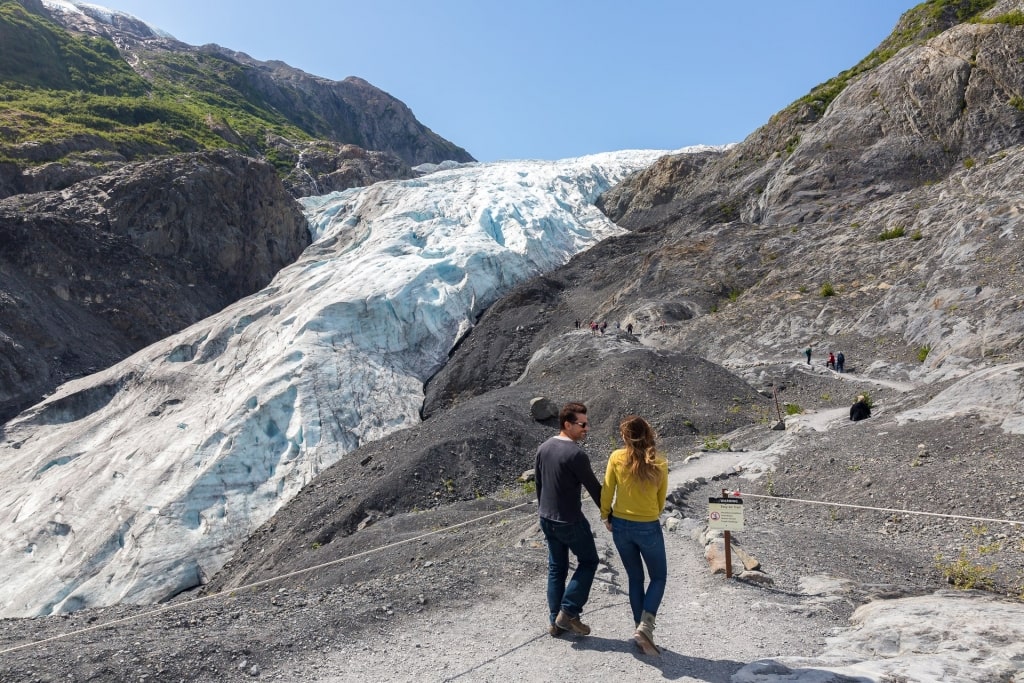
Exit Glacier, Kenai Fjords National Park
The only glacier accessible by road is the Exit Glacier, a blue-white tongue of ice, half a mile wide, that’s in retreat, leaving sculpted rocks and moraines now colonized by lush plant life. If you’re suitably fit, the 8.2-mile round trip from the Exit Glacier takes you up a steep trail through cottonwood and alder forests to high mountain meadows, with a reward of breathtaking views of the Harding Icefield. This is a six- to eight-hour trek, though, and not for the faint-hearted.
Hearing the call of the wild? Celebrity Cruises’ luxurious ships and Cruisetours can take you to all of these magnificent Alaska national parks.
Browse our range of Alaska cruises to discover more.
